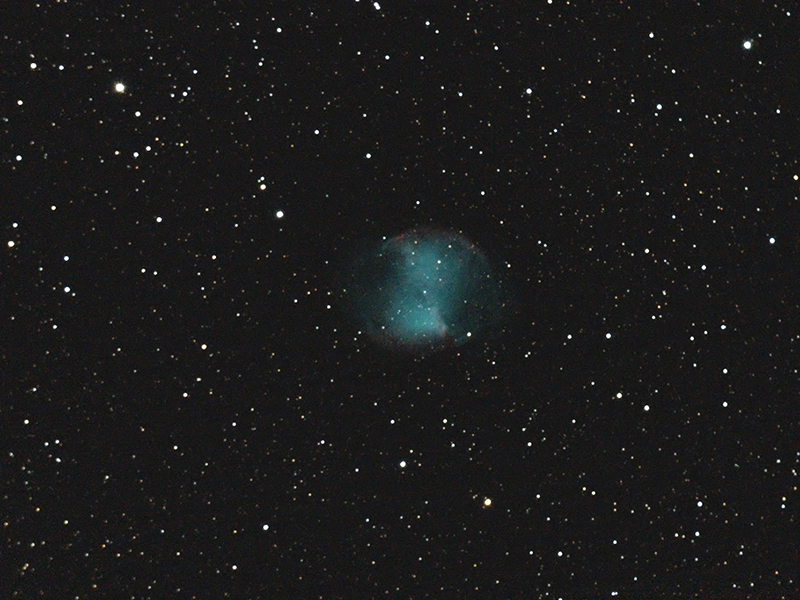
Telescope: Light Switch 8 @ f/10, altaz mode
Camera: Stock Canon 600D, interval timer
Filter: GSO IR Blocking Filter
Guide scope: None
Exposure: 17x10sec + 20x15sec, ISO 1600, saved as RAW
Darks: Internal (Long Exposure Noise Reduction On)
Flats: 32×1/25sec, Tee shirt flats taken at dusk
Average Light Pollution: Red zone, Bortle 8, poor transparency, windy
Lensed Sky Quality Meter: 18.4
Stacking: Mean with a 1-sigma clip.
White Balance: Nebulosity Automatic
Software: Deep Sky Stacker, Nebulosity, Photoshop
M27, the Dumbbell nebula, is an expanding shell of gas that was ejected from a sun-like star as it exhausted its hydrogen fuel. Swollen into a red giant, the star shed its outer shell while its core collapsed into a white dwarf. Fierce UV radiation from the collapsed core sets the surrounds gas aglow with the blue/green light of doubly ionized oxygen. The diameter of the nebula is about 1 light-year with an estimated age of 9,800 years. Located between Sagitta and Cygnus, M27 is fairly easy to find with a small telescope. Visually, it shows two lobes connected by a neck of nebulosity, giving the nebula its characteristic dumbbell shape.
This is one of a series of images that I have been taking to explore using relatively simple equipment and techniques. This is one of a short series of images taken with my Light Switch 8 at its native f/10 focal length. It was a bit windy while I was taking this image set so I combined images taken with 10 second and 15 second exposures to get as much as I could. This is a good example of how every image doesn’t have to be an over-the-top Hubble runner up. This is more about being able to see deepsky objects from my backyard with fairly basic kit.
M27 is currently in the southwest at sunset.
Recent Comments